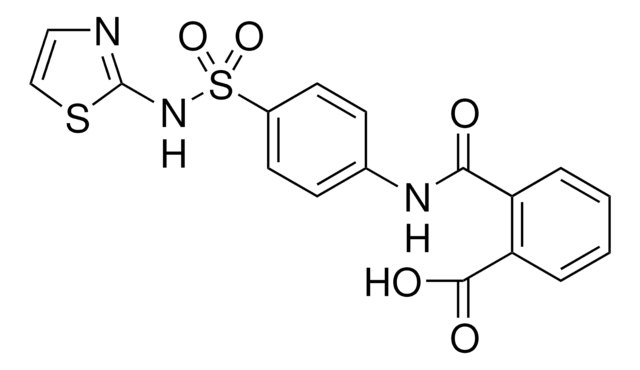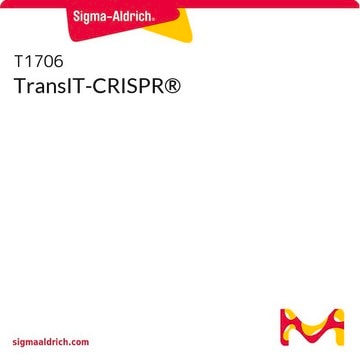XTGHP-RO
Roche
Reagente di trasfezione del DNA X-tremeGENE™ HP
High-performance polymer reagent for transfecting many cell lines
About This Item
Prodotti consigliati
Grado
for molecular biology
Livello qualitativo
Forma fisica
liquid (aqueous solution)
impiego
mL (suitable for 165 transfections)
Confezionamento
pkg of 0.4 mL (06366244001)
pkg of 1.0 mL (06366236001)
pkg of 5 × 1 mL (06366546001)
Produttore/marchio commerciale
Roche
tecniche
transfection: suitable
Temperatura di conservazione
−20°C
Categorie correlate
Descrizione generale
Caratteristiche e vantaggi
- Approfitta di un reagente non liposomiale semplice da usare, esente da componenti di origine animale, stabile a temperatura ambiente, filtrato attraverso una membrana da 0,2 μm e attivo in terreni di coltura contenenti siero.
- Raggiungi nuovi livelli di efficienza di trasfezione in cellule primarie e linee di cellule tumorali difficili da trasfettare con altri reagenti.
- Genera risultati fisiologicamente importanti con un reagente a bassa citotossicità.
- Aumenta la produttività sperimentale e permetti la validazione del bersaglio usando un protocollo semplice e ripetibile.
Qualità
Stato fisico
Altre note
Note legali
Prodotti correlati
Avvertenze
Danger
Indicazioni di pericolo
Consigli di prudenza
Classi di pericolo
Eye Irrit. 2 - Flam. Liq. 2
Codice della classe di stoccaggio
3 - Flammable liquids
Classe di pericolosità dell'acqua (WGK)
WGK 1
Punto d’infiammabilità (°F)
334.4 °F
Punto d’infiammabilità (°C)
168 °C
Certificati d'analisi (COA)
Cerca il Certificati d'analisi (COA) digitando il numero di lotto/batch corrispondente. I numeri di lotto o di batch sono stampati sull'etichetta dei prodotti dopo la parola ‘Lotto’ o ‘Batch’.
Possiedi già questo prodotto?
I documenti relativi ai prodotti acquistati recentemente sono disponibili nell’Archivio dei documenti.
I clienti hanno visto anche
Articoli
Automation is used for many applications to reduce variation caused by manual handling and to obtain reproducible results in high-throughput assays. High-throughput applications, such as knockdown studies or target screenings, often include cell transfection.
Small inhibitory RNAs offer easy gene expression knockdown in mammalian cells, revolutionizing gene research.
Transfection introduces genetic material into cells, aiding research in gene expression and cell biology.
This brief webinar provides an overview of what transfection is and the methods that are used to introduce DNA or RNA into eukaryotic cells.
Protocolli
Lentiviruses represent a powerful tool in research applications to transduce a wide range of cell types.
Cell preparation for transfection Plate cells approx. 24 hours before transfection making sure cells are at optimal concentration (70 – 90 % confluency).
Transient co-transfection of plasmids for cellular studies in protein interaction, transcription factor, and gene knockdown analyses.
Protocols for Transfecting Common Cell Lines with X-tremeGENE™ Transfection Reagents
Contenuto correlato
Browse our convenient transfection reagent selection guide to match the best reagent for your specific cell line and application needs.
Il team dei nostri ricercatori vanta grande esperienza in tutte le aree della ricerca quali Life Science, scienza dei materiali, sintesi chimica, cromatografia, discipline analitiche, ecc..
Contatta l'Assistenza Tecnica.













